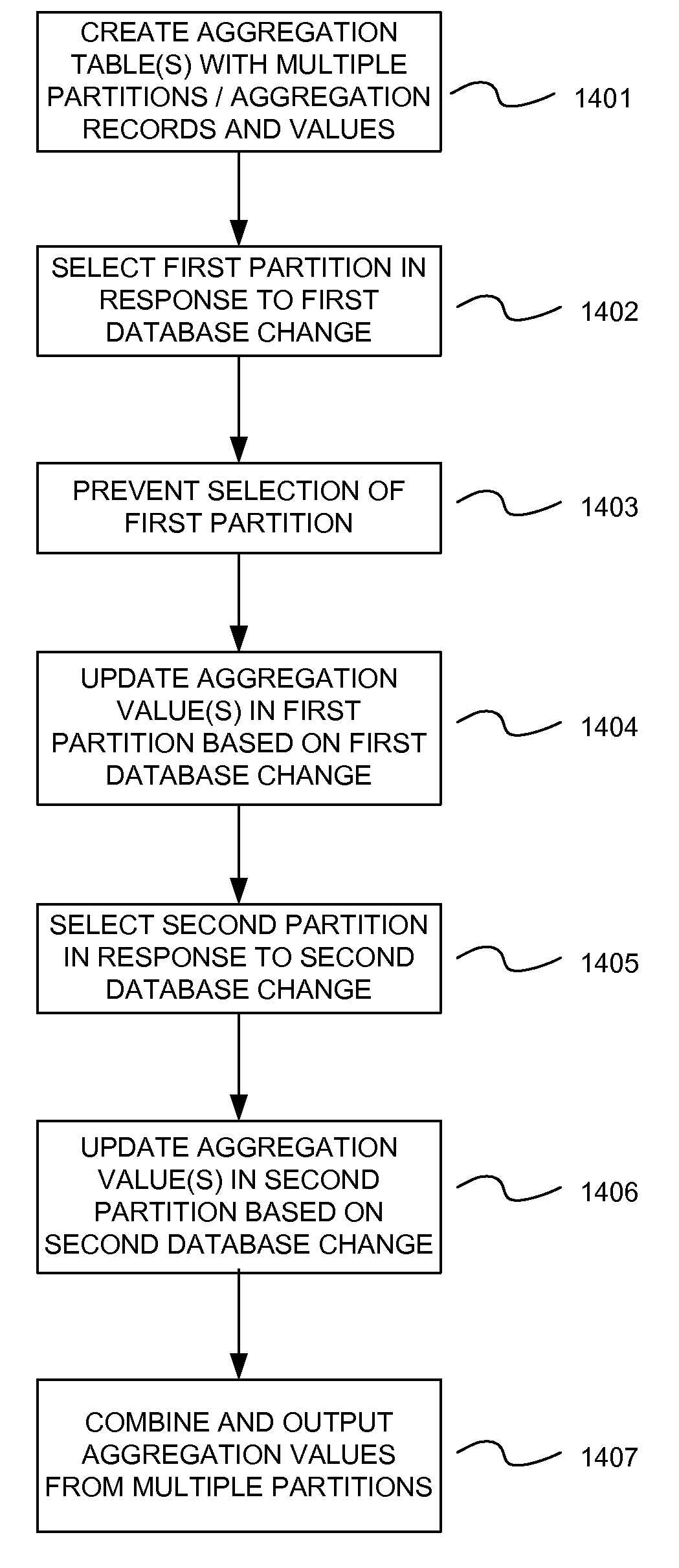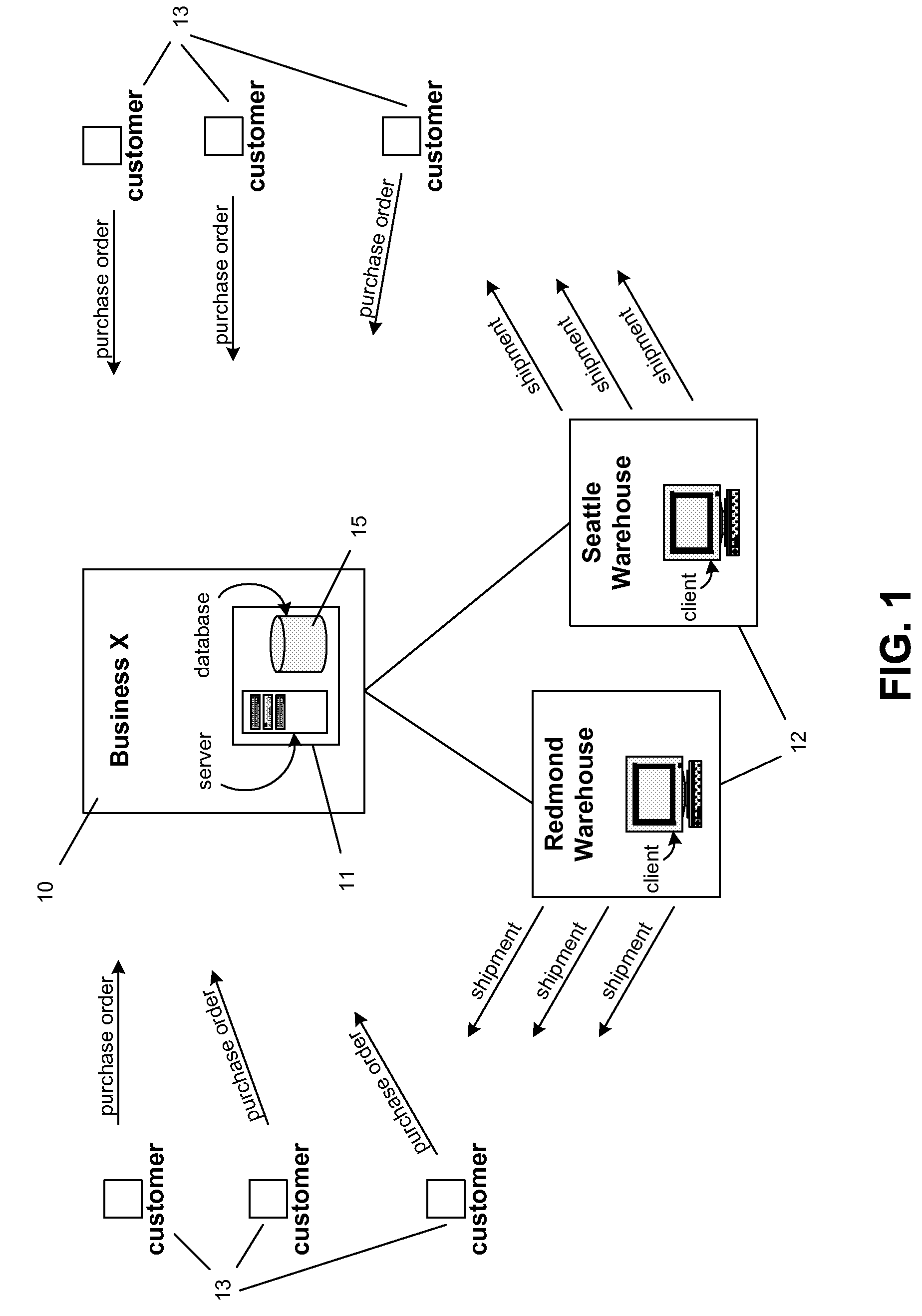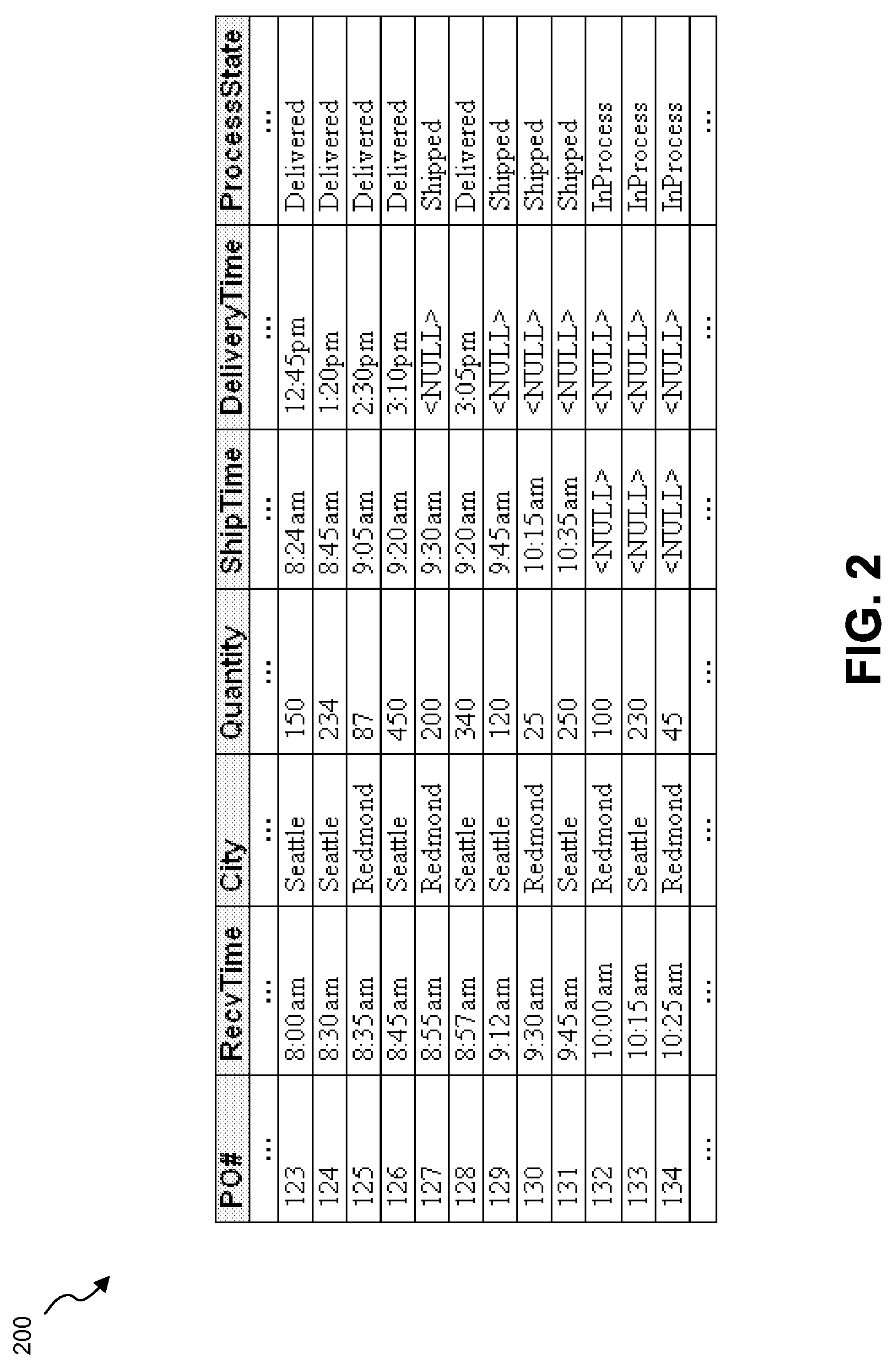Maintaining time-sorted aggregation records representing aggregations of values from multiple database records using multiple partitions
a technology of aggregation records and database records, applied in the field of maintaining time-sorted aggregation records representing aggregations of values from multiple database records using multiple partitions, can solve the problems of inability to accept the solution, inability to create or update each record in a limited amount of time, and inability to maintain the integrity of the database system
- Summary
- Abstract
- Description
- Claims
- Application Information
AI Technical Summary
Benefits of technology
Problems solved by technology
Method used
Image
Examples
Embodiment Construction
[0025]The present invention can be advantageously used in combination with the methods, apparatus and systems described in U.S. Patent Application Pub. No. 2003 / 0225769 (Ser. No. 10 / 157,968 is now pending), titled “Support for Real-Time Queries Concerning Current State, Data and History of a Process” and filed on May 31, 2002, the contents of which are incorporated by reference herein.
[0026]The present invention will be described by reference to Structured Query Language (SQL) instructions and other data analysis features found in the SQL SERVER™ 2000 relational database management system (RDBMS) software and associated Online Analytical Processing (OLAP) services software available from Microsoft Corporation of Redmond, Wash. Although some aspects of SQL instructions that may be used to implement certain embodiments of the invention are described herein, other instructions, programming algorithms and procedures used to implement the invention will be apparent to persons skilled in ...
PUM
 Login to View More
Login to View More Abstract
Description
Claims
Application Information
 Login to View More
Login to View More - R&D
- Intellectual Property
- Life Sciences
- Materials
- Tech Scout
- Unparalleled Data Quality
- Higher Quality Content
- 60% Fewer Hallucinations
Browse by: Latest US Patents, China's latest patents, Technical Efficacy Thesaurus, Application Domain, Technology Topic, Popular Technical Reports.
© 2025 PatSnap. All rights reserved.Legal|Privacy policy|Modern Slavery Act Transparency Statement|Sitemap|About US| Contact US: help@patsnap.com



